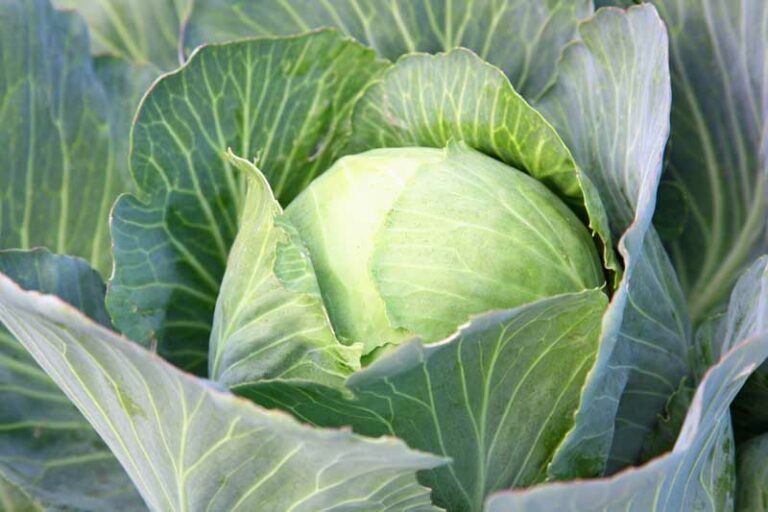Cabbage (Brassica oleracea) is a leafy green veggie that has a distinct appearance, with tightly packed leaves forming a round or oblong-shaped head. But did you know that there are different types of cabbage out there, including curly-leaved and purple-colored varieties? Some types are even grown just for their ornamental looks, rather than for eating.
Interestingly, cabbage is technically a biennial crop (just like carrots or onions), meaning it completes its life cycle over two growing seasons. However, most people grow it as an annual, harvesting it within one growing season for the best quality.
Common Cabbage varieties:
- Bok Choy
- Napa Cabbage
- Red Cabbage
- January King Cabbage
- Cannonball Cabbage
Care
Caring for cabbage plants is not too difficult if you keep a few things in mind.
- Light: Firstly, cabbage prefers full sun, but it can tolerate light shade, especially in warm climates.
- Soil: it likes a loamy, well-drained soil rich in organic matter, and it’s best to mix some compost into the soil before planting.
- Water: consistent moisture is key for cabbage to produce juicy, delicious heads. Make sure to water the soil lightly, but regularly, to avoid bitterness or misshapen heads.
- Temperature: It thrives in mild temperatures of around 60 to 65 degrees Fahrenheit. You can cover your plants to protect them if the temperature drops below 45 degrees Fahrenheit.
Propagation
Thankfully, propagating cabbages – just like Broccoli – is not difficult, and there are several ways to do it.
You can plant cabbage seeds outdoors a few weeks before your area’s last spring frost, as long as the soil is workable. Alternatively, you can start seeds indoors six to eight weeks before your area’s projected last spring frost date.
When selecting a planting site, choose a sunny spot in the garden with good soil drainage. If you’re planting in a container, make sure it’s at least a foot wide and deep, with ample drainage holes and fast-draining organic potting soil made for vegetables.
When it comes to planting cabbage seeds, plant them about 1/4 inch deep and thin seedlings to around 18 inches to 2 feet apart. No support structure will be necessary, and more space generally results in larger heads.
Common Pests
Frequently Asked Questions
That’s right! To ensure that your cabbage plants grow to their full potential, they need at least six hours of direct sunlight every day. If you can give them more than six hours of sunlight, even better! So make sure to plant your cabbage in a sunny spot where it can soak up those rays and produce those delicious and healthy heads.
How often does cabbage need to be watered?
Cabbage needs consistent soil moisture to produce crisp and juicy heads, so it’s important to keep the soil lightly moist. However, over-watering can lead to problems such as root rot and disease. As a general guideline, cabbage plants need about an inch of water per week, either from rainfall or irrigation.
Can you grow cabbage in pots?
Yes, cabbage can be grown in pots as long as the pot is large enough and has adequate drainage. Make sure to provide enough light, water regularly, and fertilize as needed.
How many cabbages do you get from one plant?
After the main cabbage head is harvested, smaller heads may grow in its place, and it’s common to get around 3-6 heads from a single plant.
What temperature does cabbage grow best in?
Cabbage grows best in mild temperatures between 60 and 65 degrees Fahrenheit. To protect them from cold temperatures below 45 degrees Fahrenheit, you can cover the plants.

